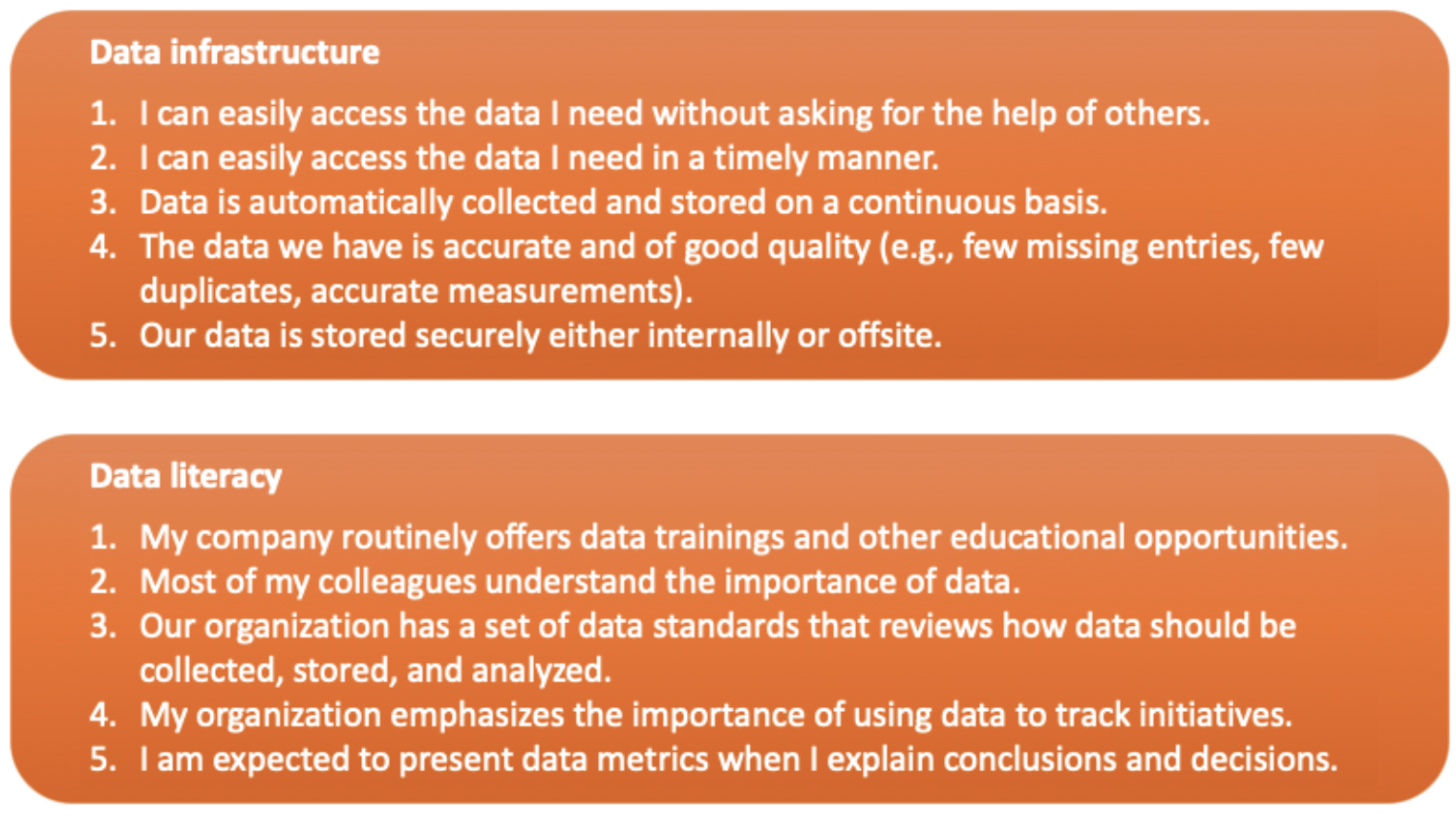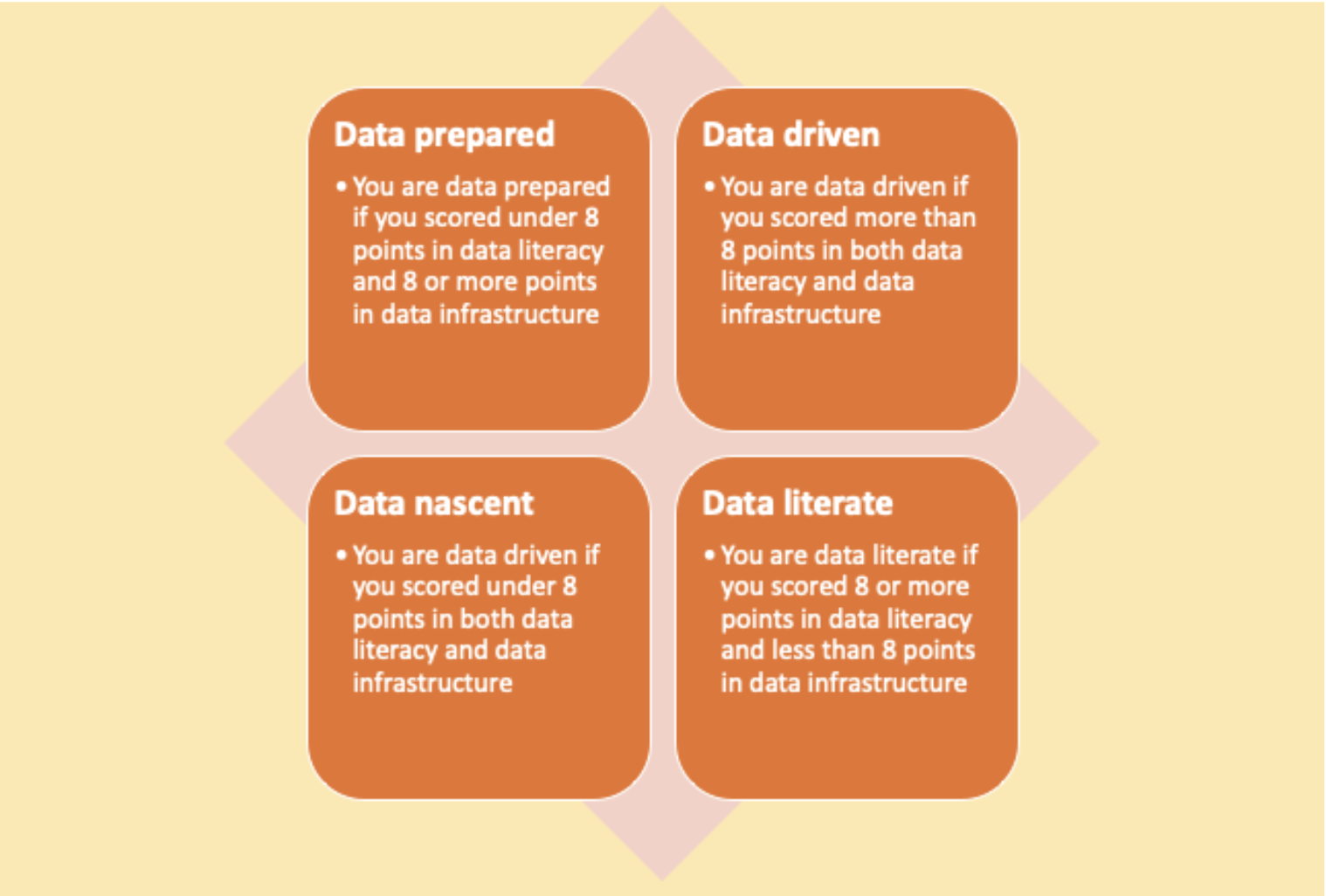
“It’s as we move up the continuum,” the instructor says, “analytics become more valuable, but also more difficult.” Diagnostic analytics, for example, can explain why something happened, provide insights, and help managers to identify root causes. In our customer service center example, it may be tying sudden spikes in call volume to events such as recall announcements or software updates.Though, to do this, more detailed data is required. Participants start mumbling about difficulties accessing data.
Once discussion reaches the realm of data science — which includes predictive and prescriptive analytics, as well as artificial intelligence — the instructor remarks that more than just detailed data is required. The data must also be clean and stable and supported by a coordinated governance strategy. There must also be an innovative environment, the right tools, and knowledgeable employees at the organization. The benefits, however, are great. You can begin to leverage data to predict what will happen in the future, let data prescribe how to make decisions, and do it continuously, at scale.
For their part, class participants rattle off several great ideas to utilize data in these ways but don't know where to start. As the course unfolds, the participants are equipped with the knowledge and skills necessary to start planning and executing data projects, some using real-time company data to prototype solutions that save the company millions, or solve a pressing business challenge in a matter of days.
Any good data scientist will routinely borrow and reuse tested code from colleagues or other projects, not reinvent the wheel every time. So, if your organization has a data team already, tap into that resource. Bring them a specific, measurable, objective question, and an idea of the available data, and I can almost guarantee they’ll have some ideas.
Data science doesn’t just answer quantitative questions but can be used to optimize every dimension your business needs. At Data Society, we offer highly customized courses that teach complex data science concepts such as R, Python, and other programming languages using real data sets. This used to pose a major challenge for our content creators, as programming languages are dynamic, and datasets were always being customized to client needs. Thankfully, we’re all data scientists, so we built a proprietary content authoring tool, which allows us to automate updates to coding snippets in our instructional materials and standardizes formatting. This not only resulted in improved presentation quality but a massive saving in time. Imagine your next presentation literally writing itself! That’s really what learning data science is all about: optimizing tasks, so you can stay focused on what matters most.
While the concept of presentations that write themselves sounds great, maybe your organization needs to ensure everyone can find their way through an Excel document without breaking the formulas. While you should never shy away from developing a long-term vision for leveraging data, remember to set interim milestones that you can hit along the way. Start with upskilling on core tasks before tackling more difficult solutions.
Data governance is the management of the overall quality, integrity, relevance, and security of available data. Many organizations may have designated learning data as a low priority, but you can effectively advocate for improved governance if you show how the data will be useful. It is critical to get data governance right before any high-powered analytics are possible, and it is where many organizations are currently stuck. Some organizations, especially small ones, will have nascent governance strategies, and you can lead the charge to set standards for data entry, data checking, and data ownership relevant to your goals.
Whether you’re the director of marketing, relying on social platform dashboards for metrics, or an L&D lead using the latest technologies like xAPI, these canned reports and dashboards provided by these tools may not be giving you what you really need. While great tools for collecting data, true analytics requires more. Storing, cleaning, analyzing, collaborating on, and visualizing data, with additional tools, can prove very useful. Ask around your organization to see what tools are available to you and consider a data literacy course to understand how they can enable your work.
One of the biggest factors influencing a data program’s success is the culture built up around it. Whether it’s a larger analytics program or specifically related to learning, find a leader in the organization to champion data usage, whether highlighting successful data projects in newsletters or at events, asking for data in meetings or bringing in experts for “lunch and learns.” You and others may also want to attend data-related training or conferences, or even start a community of practice.
Review the statements below and award yourself between 0 and 3 points depending on whether the statement does not describe your organization at all or describes it quite well. Calculate your score for both categories and read for your results.

